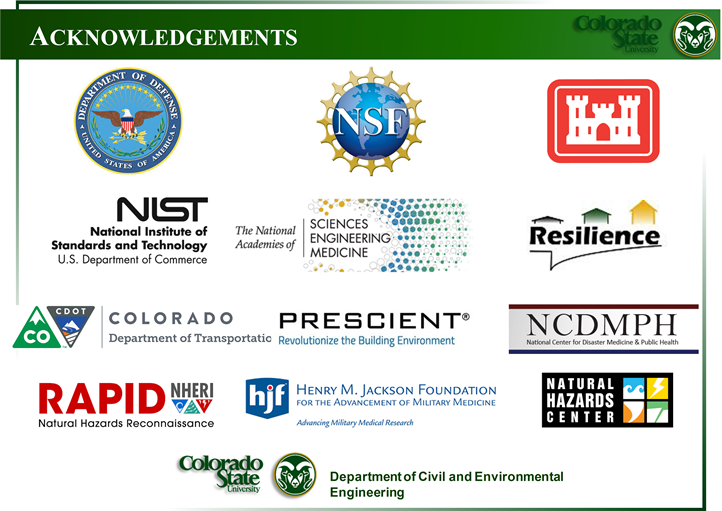Dr. Hussam N. Mahmoud
George T. Abell Professor in Infrastructure and Director, Structural Laboratory
The Socio-Physical and Hazard-Integrated Environment (SoPHIE) Research Group
Department of Civil and Environmental Engineering

Research
Dr. Mahmoud's research program is centered around Sustainable and Resilient Infrastructure and Communities with focus on three major thrusts including:
1) Quantifying community resilience with focus on recovery of social institutions and critical infrastructure following extreme events.
2) Assessing building damage and developing new structural systems subjected to extreme single and multiple hazards.
3) Evaluating, Inspecting, and Managing deteriorated infrastructure within the context of life-cycle analysis.
In our research we embrace multi-disciplinary approaches to account for socio-economic drivers for damage and recovery for different hazards including earthquakes, wildfires, hurricanes, tornados, sea level rise, and flood event.
 |
We sincerely appreciate and acknowledge all funding provided by state, federal, and national agencies as well as private sectors to support the research studies. Funding sources include the National Science Foundation, the U.S. Army Corps of Engineers, the U.S. National Academies of Sciences, Engineering, and Medicine, the Department of Defense, The National Institute of Standards and Technology, The Center of Excellence for Community Resilience Planning, The Colorado Department of Transportation, The U.S. Department of Transportation, The National Center for Disaster Medicine & Public Health, The Henry Jackson Foundation, Natural Hazard Center, and Prescient. Thanks are also due to all students, post-doctorate researchers, visiting scholars, and international collaborators. |
